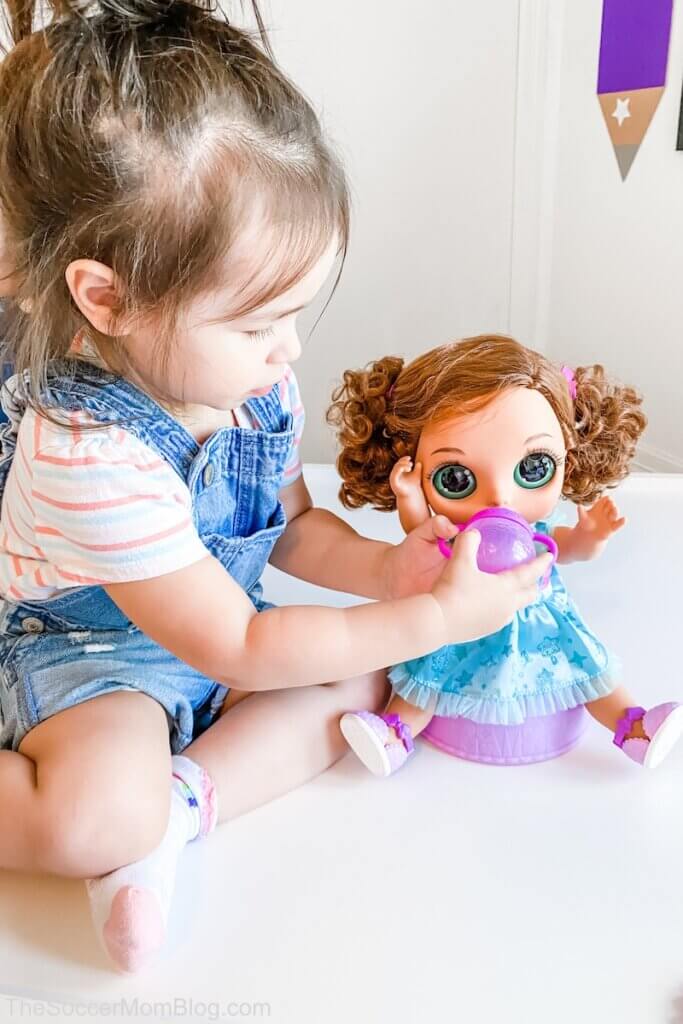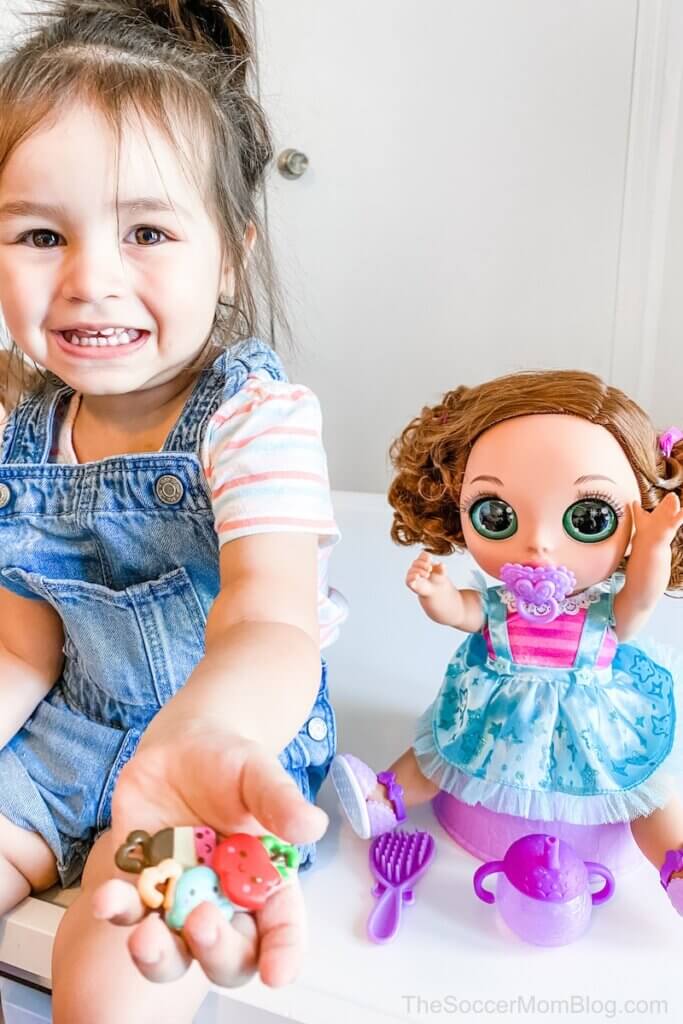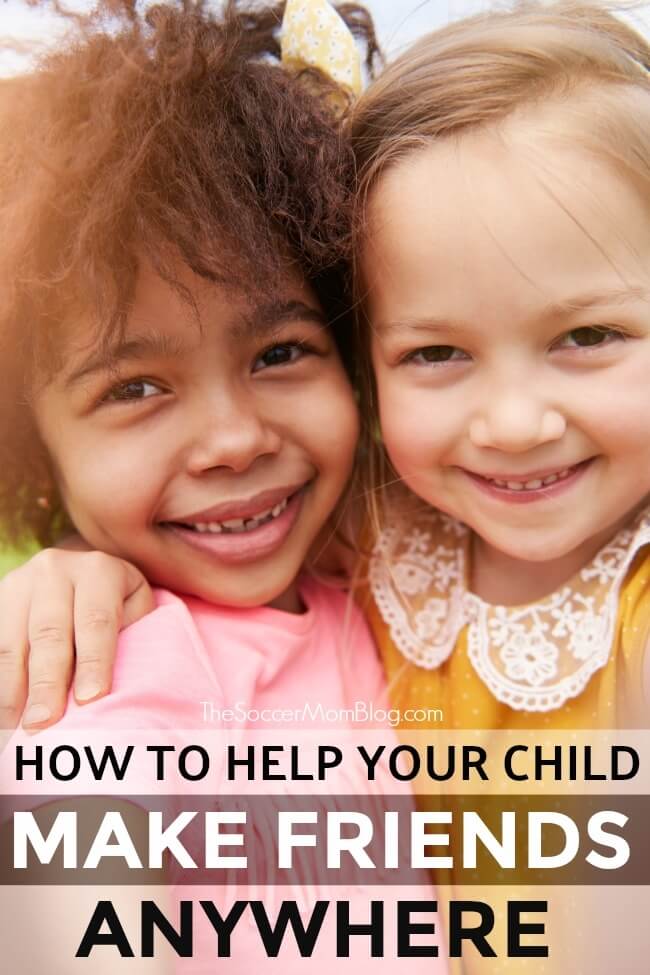Inside: 6 simple strategies that parents can use to teach empathy to kids. Sponsored by BABY born Surprise™.
So…We’ve hit the “Mine” Stage
My youngest daughter is currently going through the “mine” phase. If you’ve ever been a parent of a two or three-year-old then you know exactly what I’m talking about!
According to the “experts,” this is the age when kids learn about the concept of possessions and begin to assert their independence.
While totally normal, it’s obviously not the behavior we’re going for, am I right??
Instead of just saying “no” all the time and focusing on correcting the unwanted behavior, another effective strategy is to instead model the behavior we want and focus on teaching empathy.
What is Empathy?
Empathy at its core is the ability to sense other people’s emotions and understand how they are feeling. We can better relate to others when we know what they’re going through.
Empathy is a skill that is learned, just like walking and talking. As our kids develop this skill, you’ll notice that there’s less of the “me” and “mine” and that they play better with other kids, share more, etc. It all boils down to the golden rule of treating others how we want to be treated!
The awesome folks at BABY born® recently sent my youngest daughters each a Magic Potty Surprise doll. They also sent two extra for our yearly toy drive — what a fab example of spreading kindness!
In this post I’ll explain how pretend play can have a big impact when it comes to teaching empathy, compassion, and kindness.
6 Ways to Teach Empathy to Kids
While I don’t consider myself a parenting expert per say, I am raising three little girls that are turning into pretty cool people. They’re definitely evidence that this works!
1. Lead by Example
YOU are your child(ren)’s number one example. The way you act towards others is the way they will too.
Sharing, using positive language, helping others — if we don’t do these things, how can we expect our kids to do them?
2. Read Books About Kindness
Bedtime stories are a big deal in our house and part of our nightly routine. Not only does reading aloud together help the girls settle down and get ready for sleep, this is also the perfect opportunity to introduce new concepts.
Silly stories are fun of course, but why not read stories that are focused on spreading kindness and helping others too?
The more kids are exposed to the idea of kindness and empathy, the more they will practice these things in their own lives.
3. Consume Positive Media
Speaking of exposing kids to good examples through books, it’s important to make sure that ALL the media they experience teaches the lessons you want for them.
Even if the television is on in the background and you think they aren’t paying attention, I promise your kids are listening! They listen to everything!
We try to be conscious of the messages that are in music, television, movies, etc. We also monitor what our kids watch on tablets during screen time. For this reason, we have a house rule that all screen time takes place in family areas, like the living room.
4. Point out Examples of Kindness
When you see acts of kindness taking place, make sure to show your kids in that moment. “Did you see how that woman held the door open for the family behind her?”
Giving kids real life examples of acts of service makes them more likely to repeat those good deeds.
The same goes when you see an example of rudeness. When you get home or in another private place that’s appropriate for the discussion, talk with your kids about what you saw and why that is not the way we treat others.
Related: 110 Random Acts of Kindness for Kids
5. Care for Pets
If you have a family pet, make sure to include your kids in their care. Simple things such as giving fresh water to the dog teaches kids responsibility and nurturing other living things.
Providing examples of nurturing for kids is step one, but in order for them to truly “get it,” kids need to be able to practice.
Gail Melson, professor of child development and family studies at Purdue University explains: “Nurturing isn’t a quality that suddenly appears in adulthood when we need it. […] People need a way to practice being caregivers when they’re young.”
6. Nurturing Play
If you don’t have a family pet, dolls are another excellent way for kids to practice the nurturing skills we teach them. Even if you do have a pet, taking care of a doll is still beneficial — a child can never have too many opportunities to practice nurturing!
I’ve definitely seen the benefits of practicing nurturing through play with my girls, especially with their BABY born® Surprise™ Magic Potty Surprise dolls.
Who is BABY born Surprise™ Magic Potty Surprise?
BABY born Magic Potty Surprise is a magical toddler doll! Give her a drink of water, feed her doll food and put in a potty pod, then she pees glitter and poops charms!
Yep, you read that right! Glitter poop!! That definitely got my kids’ attention and they couldn’t wait to try out their new toys!
Dolls that pee and poop are not necessarily a new thing, but this is the first doll that pees glitter and poops charms! It’s silly fantastical fun that is sure to bring the giggles and get young imaginations going!
Kids can collect the charms and put them on the included charm bracelet.
Essentially, these cute little charms are rewards for nurturing the doll. Give her a drink of water, feed her doll food and put in a potty pod, then she pees glitter and poops charms.
My girls got such a kick out of this! They couldn’t wait to see what charms would be revealed with each meal! (You can see lots of video demos on the Baby born Surprise™ YouTube channel!)
Two year olds are not known for being gentle with toys, but I was surprised to see that my youngest daughter took such care with her Magic Potty Surprise doll. I loved watching her cradle her doll as she carried her around, and she even patted her head and spoke to her gently.
My daughter especially loves to brush her doll’s hair, though she’s careful not to mess up the pigtails because she really likes them!
Each Magic Potty Surprise doll comes with:
- 9 doll food packets
- 10 potty pods with surprise charms inside
- Plate, spoon, and sippy cup
- Doll potty
- Hair brush
- Doll pacifier
- Kid-sized charm bracelet
Another thing I love about these dolls is that there are a variety of skin and hair options — my girls finally have dolls that look like them! Toys and brands that embrace diversity are important to our family.
If you’re looking for a truly unique gift this holiday season, click here to check out the whole line of Baby born Surprise™ dolls and toys!
How do you work on teaching empathy to your kids? I’d love to hear your tips in the comments!
Pin this post:
You might also like:
- Marshmallow Playdough - April 18, 2024
- Homemade Fruit Leather Recipe - April 17, 2024
- 7-Layer Dip Cups - April 16, 2024










Leave a Reply